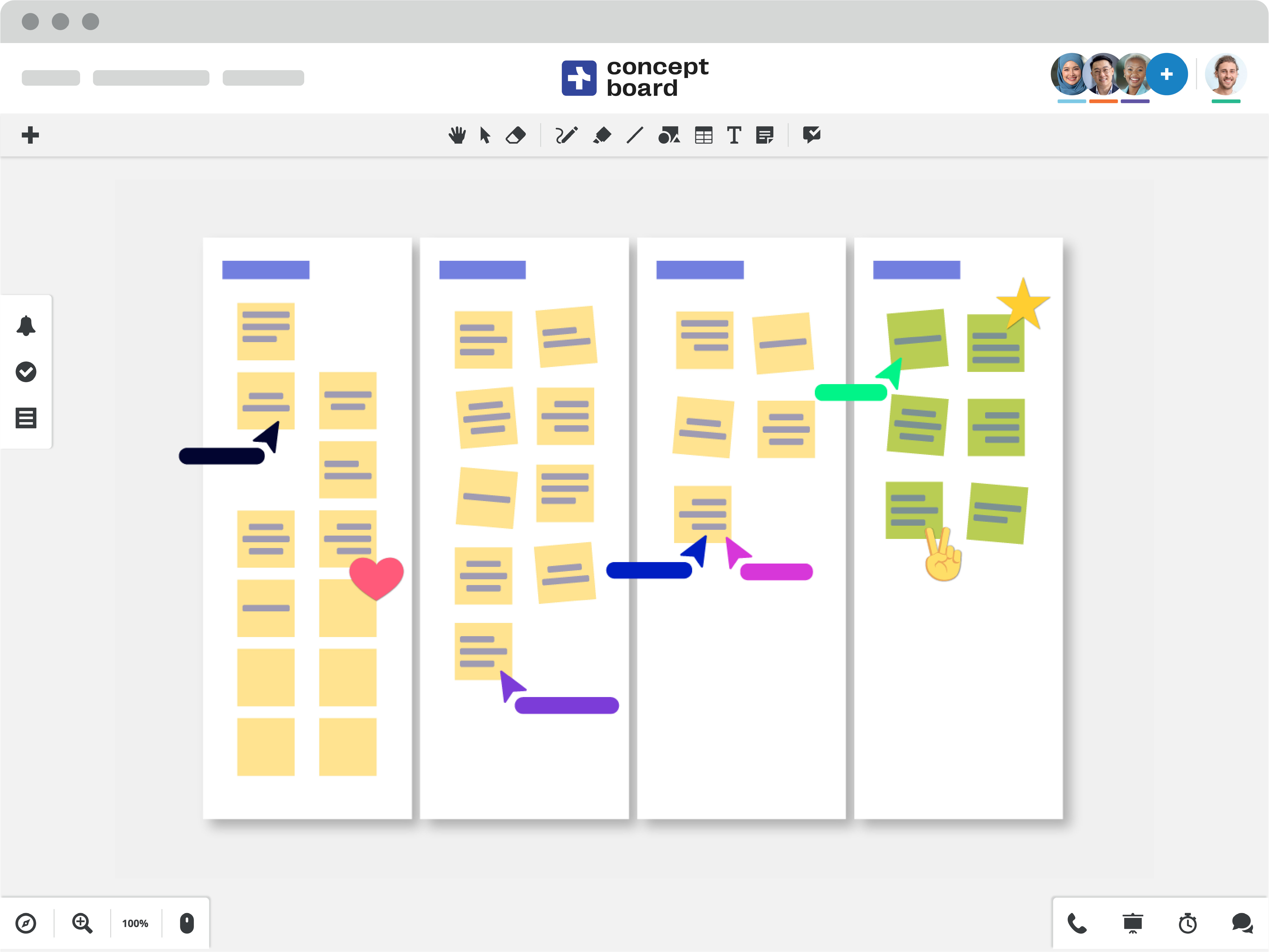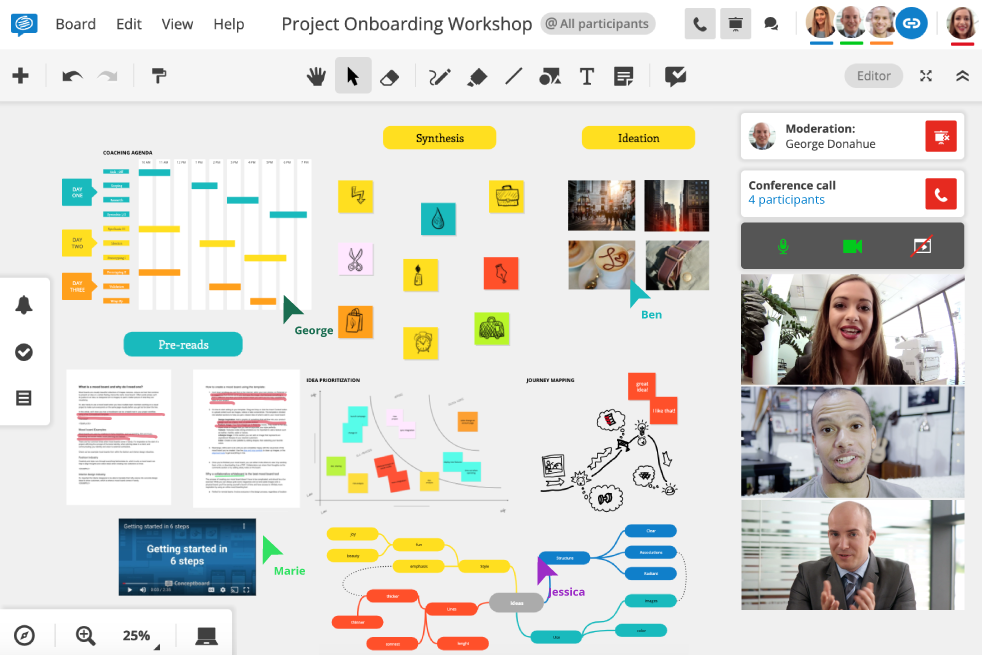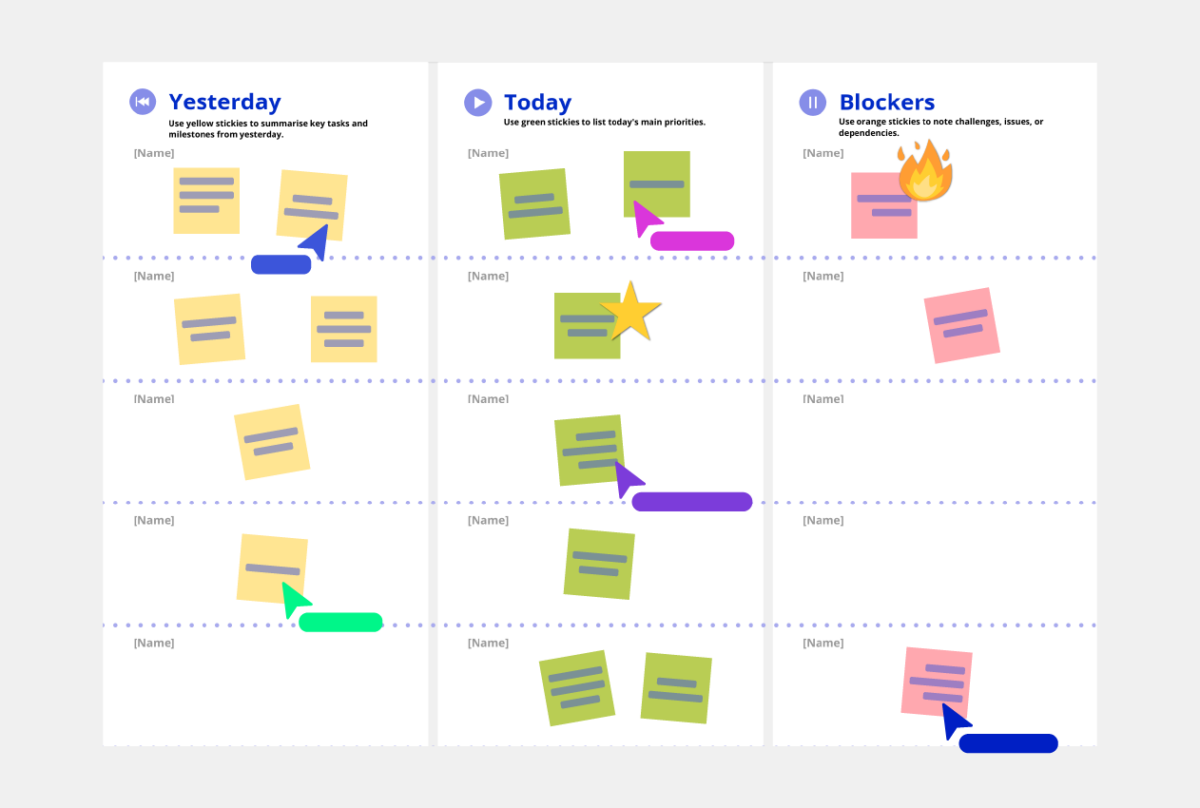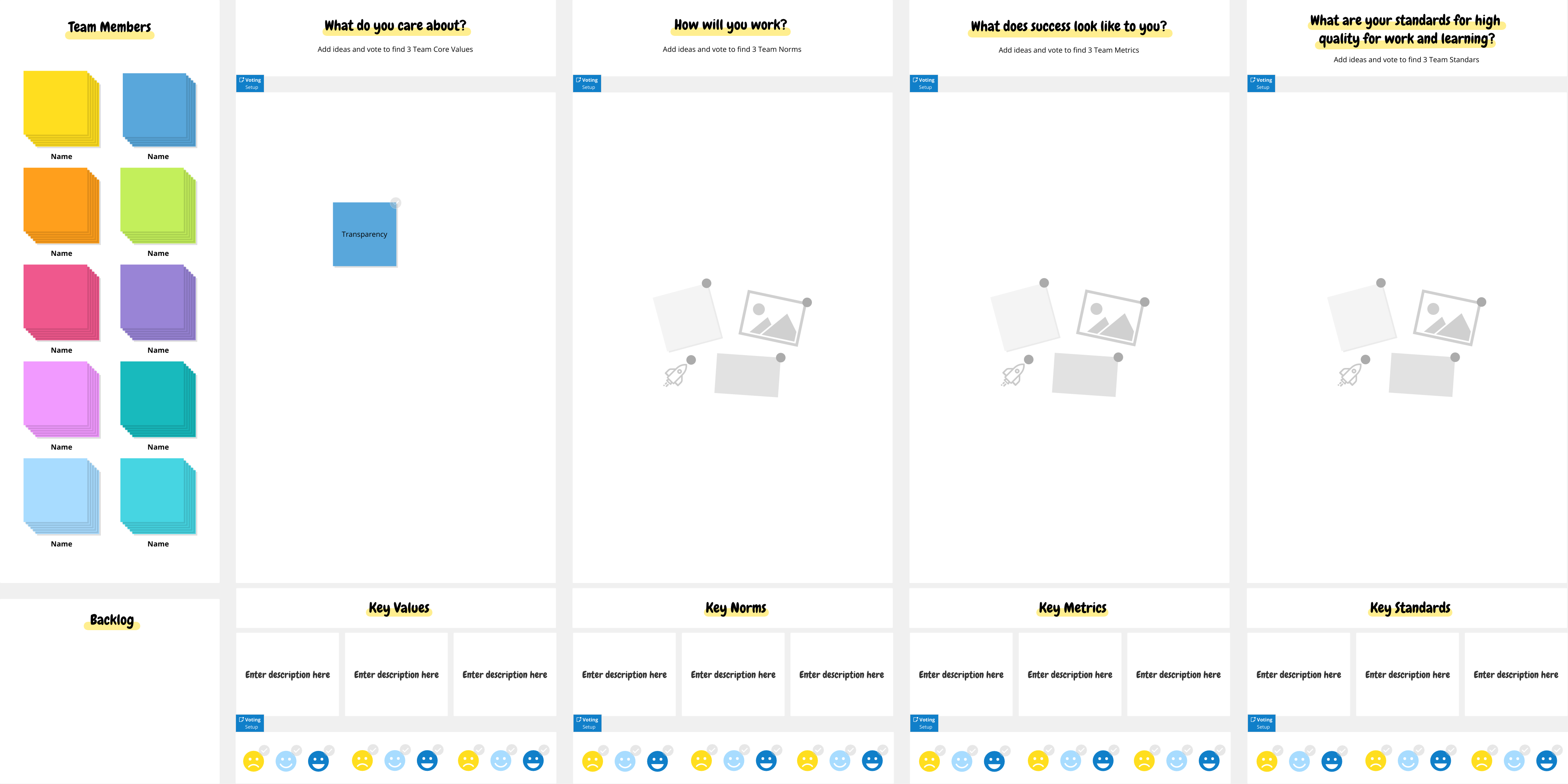Become a macro manager with Conceptboard’s collaborative whiteboard
We’re going to explore five practical ways to become a macro manager, and how Conceptboard can help at every step.

Managing people is a tough gig. Everyone has different learning and communication styles meaning there’s not a one size fits all approach. Too much involvement can lead to demoralized staff who feel micromanaged. While a completely hands-off approach can leave teams unproductive and rudderless.
Most people have experienced micromanagement at some point in their professional lives, whether from a manager or a nosy colleague, and it’s not very pleasant. For managers, micromanaging gives a sense of control over their teams, projects, results and budgets. But staff on the receiving end, the metaphorical look over the shoulder is a massive contributor to low morale, high staff turnover, and job dissatisfaction.
One possible solution is macromanagement. It involves taking a step back to look at the big picture, the main objectives and the vision, while leaving the day-to-day tasks and smaller details to the team to figure out for themselves.
We’re going to explore five practical ways to become a macro manager, and how Conceptboard can help at every step.
Don’t have all the answers
Macro managers don’t pretend to have all the answers. Instead, they give space for the team to think of alternative solutions or collaborate together to come with fresh ideas. This gives teams feelings of empowerment and value and a sense of ownership over the results. By collaborating as a team, you create strong bonds within the team without needing the manager to be the glue between everyone.
Our ready-to-use templates are perfect for ideation and team problem solving. Why not give one of them a try:
Macro managers align the team early
It’s easy for employees and managers to lose sight of the bigger picture as they get bogged down in their day to day tasks. So to ensure your team is best prepared for macromanagement, it’s important to lay out the long term plan and define what success looks like. Collectively writing a team charter can help you do this.
This Team Charter guide will walk you through the steps needed to complete a team charter with your team, setting clear expectations from the beginning.
Open lines of communication
There’s nothing more annoying than constant emails from a manager asking ‘are you finished yet?’ While it’s important to know the status of tasks, the constant prodding will only serve to slow down the process. Instead, empower staff to track projects in a shared central location, so everyone can see the status, expected delivery dates, and who is in charge of what.
A digital Kanban board is the go-to project management method for many large companies such as Spotify, Pixar and Microsoft. By implementing a Kanban method, you can experience benefits such as improved transparency, simplified reporting, improved effectiveness and better teamwork. Check out the free template today.

Centralize projects
Whether your team is fully remote or co-located, one of the most effective ways to becoming a macro manager is through centralizing projects and driving transparency.
Conceptboard’s digital whiteboard canvas is a great tool for collaborating on projects, gathering feedback and making communication more visible and open. By using Conceptboard as a project management tool, all stakeholders are encouraged to communicate and give feedback in one central hub that’s visible for all. This reduces email clutter while creating a more open and collaborative environment.
The infinite space means many elements of the one project can be saved centrally on one board, plus you can zoom out for a complete overview eliminating the need to worry about tiny details.
All projects are then saved in the central online folder, accessible to everyone at any time. Conceptboard isn’t just a collaboration tool for small teams within the organization but also an alignment tool for the entire organization.

Stand up meetings
Enabling autonomy and driving individual accountability is the hallmark of a macro manager. By setting up a fixed schedule for meetings and sticking to it, managers can stop the individual check-ins while receiving a general overview of progress and showing presence and involvement. The stand up meeting, a core component of agile methodologies is gaining traction across many industries thanks to its collaborative open design. Every morning, your team stands up for a short 15 minute progress meeting, sharing what they did yesterday, current plans and any roadblocks.
“A daily standup provides a valuable insight into other departments, inspiring teamwork and improved communication, which drives empathy and understanding,” says business consultant Grant Gamble.
Use our simple Stand up meeting template that your team can use as the backbone of your daily standup meetings.
Hopefully these five practical tips have helped you understand how to implement macromanagement to build stronger, more collaborative teams without losing control of productivity and effectiveness.
Discover visual collaboration
Collaborate seamlessly across teams and timezones with Conceptboard’s collaborative online whiteboard
If you want to learn more about introducing big picture thinking into your organization, check out our article How to put big picture thinking into practice with an online whiteboard.


